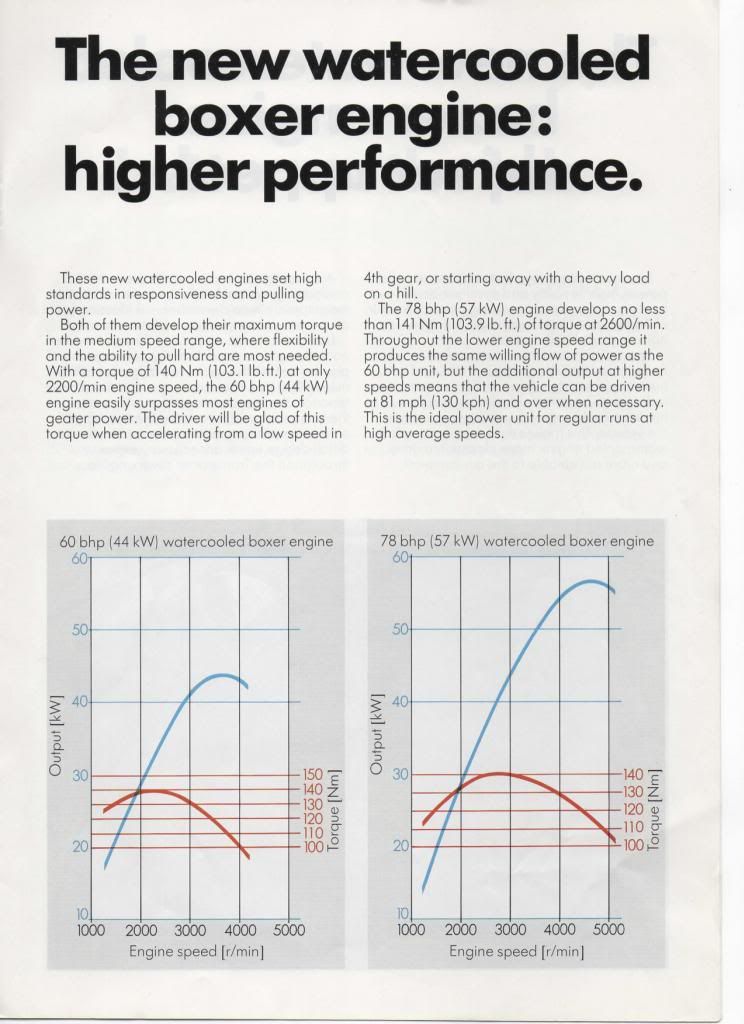Well that was an interesting morning. The conclusion, as far as these two carbs work on a DG (not a DJ as I wrote at first), is that there is a difference, but it's tiny, so what I thought I could detect in the throttle must have been mostly my imagination.
The test showed that the LT carb is running very rich, and I was told off again for trying to compare carbs without setting them up properly. The plot below compares the original carb to the LT carb. The dotted lines are the torque curves (read against the right hand axis) and the solid lines are the power curves (left hand axis). The colours are very similar unfortunately. 'Run #3' is the LT carb, 'Run #8 is the T25 carb. Run #3 is the darker of the two colours - where the lines separate, Run #3 is slightly above Run #8 for both power and torque.

So between about 2750 rpm and 4250 rpm the LT carb gives about 1-2 HP more and about 2.5 ft.lbs more. There would be more to come from it by tuning it properly, and the advice I was given was that the bigger carb would be the one to start from when the 2.1 DJ goes in. Their machine gives them an indication of the mixture across the whole range, so they can work out which jets need altering and whether they should be bigger or smaller. They do this by either drilling a larger hole in the existing jets, or filling them with solder and then drilling a smaller hole.
I also found it interesting to see the effect of timing. Advancing or retarding the timing has the effect of tilting the curves like a see-saw, so low end performance can be improved at the expense of top end performance. When I go back they'll optimise the timing as well as the jetting.
In the chart above, the peak HP of both carbs was about the same - 76.7 at 4200-4300 rpm. The peak torque was also similar at 106 ft.lbs and was similar from around 2250 rpm to 3250 rpm. I'll dig out the 'official' charts for the engine to see how they compare. The DG is quoted as '78 PS' from memory, and HP values will be a fraction lower (78 PS = 76.9 HP). What I can't remember is whether the quoted 78 PS is at the wheels or at the engine. If it's at the wheels then clearly my engine is producing almost exactly the original factory spec. But Peter has written '96 bhp' against Run #8. I didn't catch exactly how he calculated that. Maybe it was just 'take the max HP figure and add 20 for transmission losses'. Anyway, that's his figure for the engine output, since all the other figures are measured at the wheels. He seemed quite impressed with the configuration of the Speedshop exhaust and was asking what it's claimed improvement in power was - I didn't know. It seems unlikely to be responsible for a 20 HP improvement, so I'm going to guess that the quoted 78 PS figure is for the output at the wheels, and the Speedshop exhaust has almost exactly compensated any loss of power through old age (or maybe there hasn't been any loss and the Speedshop exhaust does nothing).
Anyway, I'm pleased with the results, and really enjoyed the session. Peter and his colleagues were very friendly and very knowledgeable, and I'm looking forward to getting the best out of my 2.1 once it's in.

